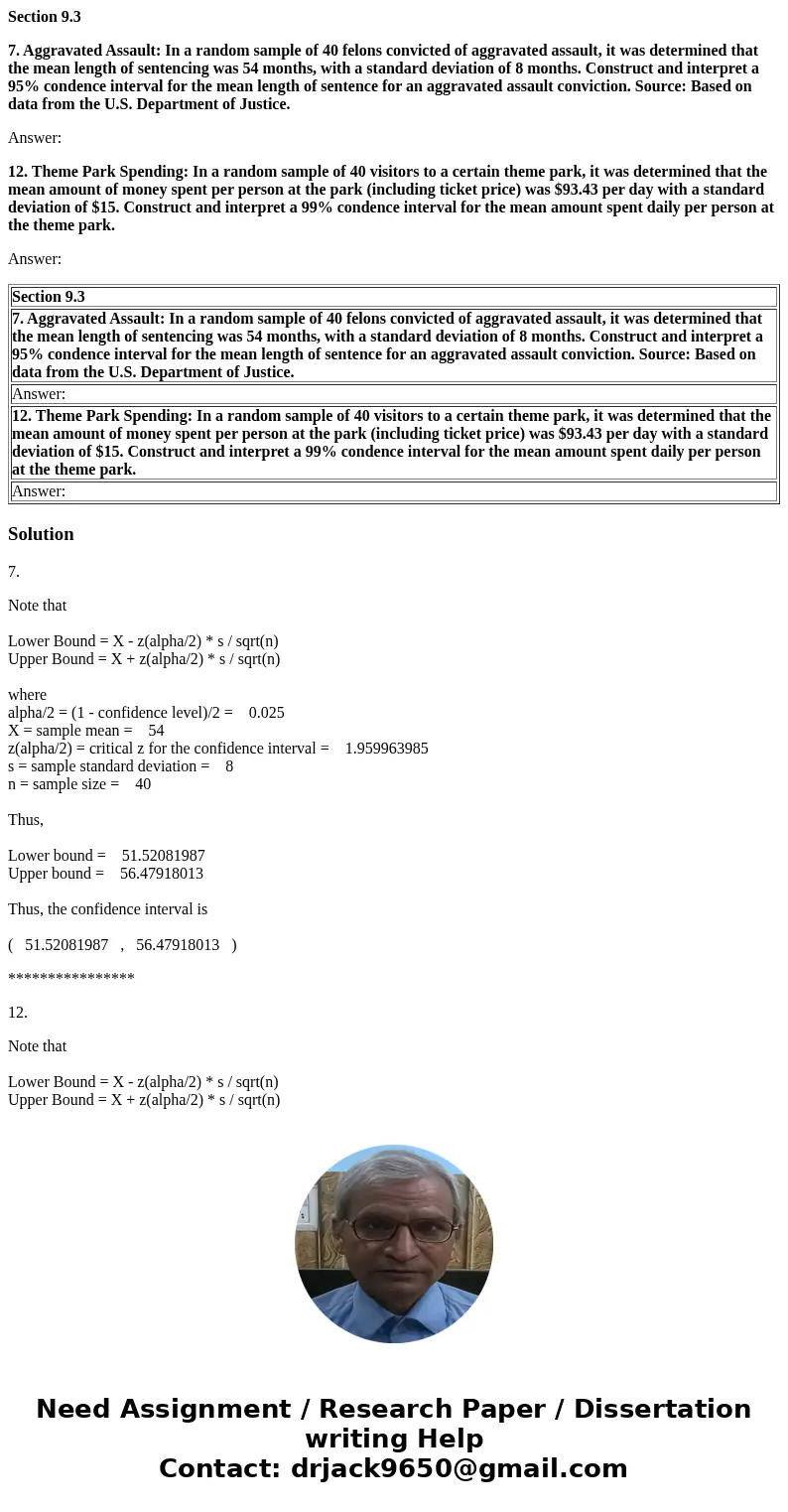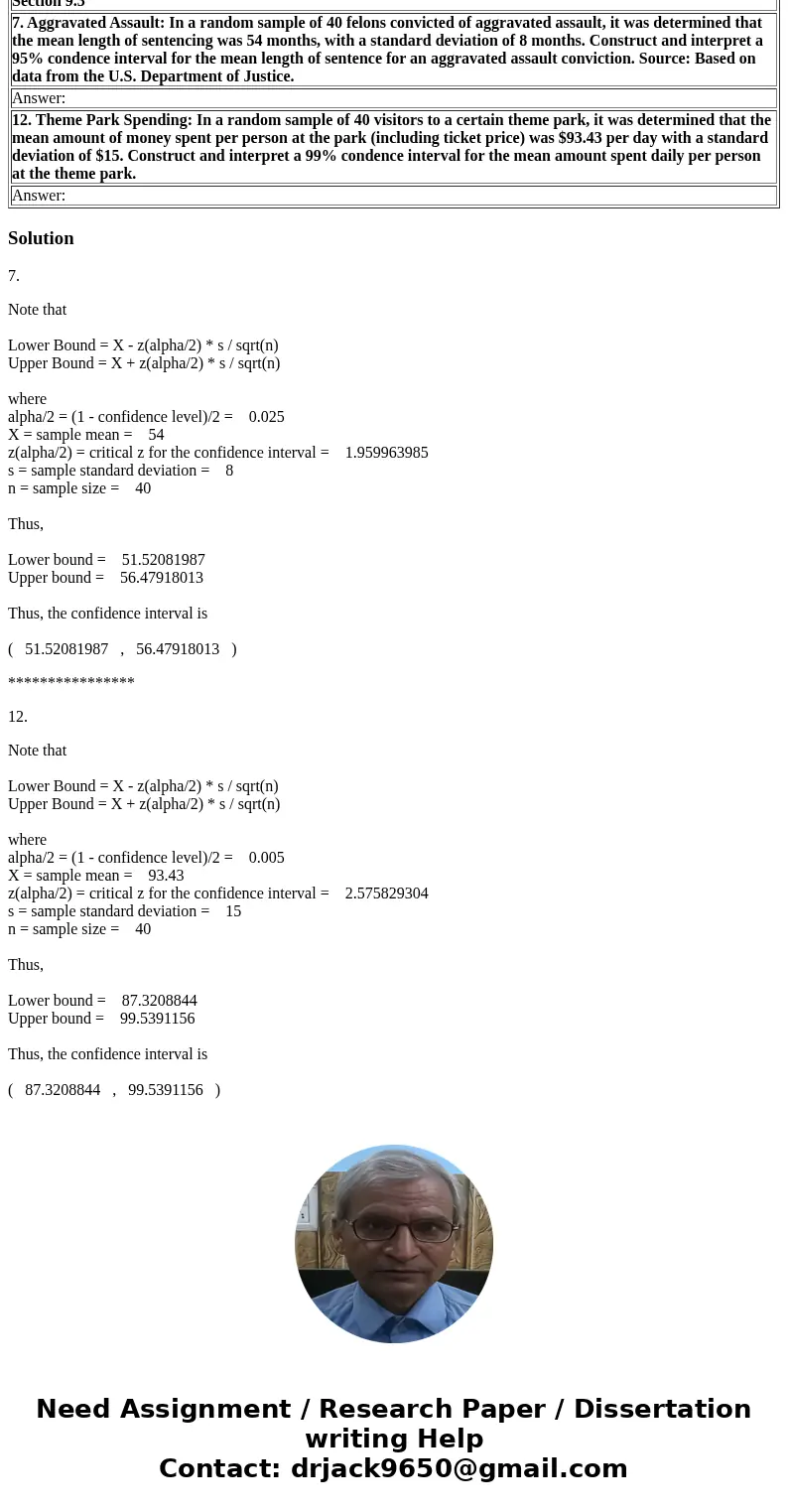Section 93 7 Aggravated Assault In a random sample of 40 fel
Section 9.3
7. Aggravated Assault: In a random sample of 40 felons convicted of aggravated assault, it was determined that the mean length of sentencing was 54 months, with a standard deviation of 8 months. Construct and interpret a 95% condence interval for the mean length of sentence for an aggravated assault conviction. Source: Based on data from the U.S. Department of Justice.
Answer:
12. Theme Park Spending: In a random sample of 40 visitors to a certain theme park, it was determined that the mean amount of money spent per person at the park (including ticket price) was $93.43 per day with a standard deviation of $15. Construct and interpret a 99% condence interval for the mean amount spent daily per person at the theme park.
Answer:
| Section 9.3 |
| 7. Aggravated Assault: In a random sample of 40 felons convicted of aggravated assault, it was determined that the mean length of sentencing was 54 months, with a standard deviation of 8 months. Construct and interpret a 95% condence interval for the mean length of sentence for an aggravated assault conviction. Source: Based on data from the U.S. Department of Justice. |
| Answer: |
| 12. Theme Park Spending: In a random sample of 40 visitors to a certain theme park, it was determined that the mean amount of money spent per person at the park (including ticket price) was $93.43 per day with a standard deviation of $15. Construct and interpret a 99% condence interval for the mean amount spent daily per person at the theme park. |
| Answer: |
Solution
7.
Note that
Lower Bound = X - z(alpha/2) * s / sqrt(n)
Upper Bound = X + z(alpha/2) * s / sqrt(n)
where
alpha/2 = (1 - confidence level)/2 = 0.025
X = sample mean = 54
z(alpha/2) = critical z for the confidence interval = 1.959963985
s = sample standard deviation = 8
n = sample size = 40
Thus,
Lower bound = 51.52081987
Upper bound = 56.47918013
Thus, the confidence interval is
( 51.52081987 , 56.47918013 )
****************
12.
Note that
Lower Bound = X - z(alpha/2) * s / sqrt(n)
Upper Bound = X + z(alpha/2) * s / sqrt(n)
where
alpha/2 = (1 - confidence level)/2 = 0.005
X = sample mean = 93.43
z(alpha/2) = critical z for the confidence interval = 2.575829304
s = sample standard deviation = 15
n = sample size = 40
Thus,
Lower bound = 87.3208844
Upper bound = 99.5391156
Thus, the confidence interval is
( 87.3208844 , 99.5391156 )


 Homework Sourse
Homework Sourse